The origins of Celtic mythology have fascinated scholars and enthusiasts alike, as they delve into the rich tapestry of ancient Celtic culture. This journey through time takes us back to the ancient Celts, a people steeped in tradition, mystical beliefs, and a deep connection to nature. As we explore the pre-Celtic influences, the intricate pantheon of gods and goddesses, and the sacred rituals and festivals, we uncover the intricate web of Celtic mythology. With fascinating connections to other mythologies and a vibrant revival in modern times, Celtic mythology continues to captivate us, offering a glimpse into a world where gods, heroes, and mythical creatures shape the destiny of mankind. Join us on this extraordinary expedition into the origins of Celtic mythology.
Contents
- The Ancient Celts
- Pre-Celtic Mythological Influences
- The Celtic Pantheon
- The Role of Rituals and Festivals
- Interactions with Other Mythologies
- Survival and Revival
- Conclusion
- Frequently Asked Questions
- References
-
Frequently Asked Questions
- 1. How old is Celtic mythology?
- 2. What regions did the ancient Celts inhabit?
- 3. Did the Celts have a written language?
- 4. Who were the deities worshipped in Celtic mythology?
- 5. What were some common mythical creatures in Celtic mythology?
- 6. How did Celtic mythology influence other mythologies?
- 7. What role did rituals and festivals play in Celtic mythology?
- 8. What is the significance of Celtic mythology in modern literature and art?
- 9. Are there any surviving written texts of Celtic mythology?
- 10. How has Celtic mythology been revived in modern times?
- References
- Read More
The Ancient Celts
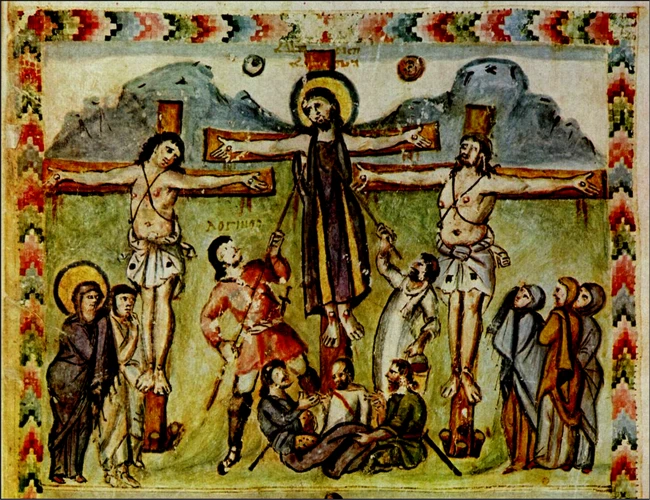
The Ancient Celts were a fascinating group of people who inhabited parts of Europe between the 8th and 1st centuries BCE. The Celtic Culture was characterized by its vibrant art, intricate craftsmanship, and deep connection to nature. The Celts were skilled farmers, warriors, and craftsmen, known for their intricately designed jewelry, weapons, and pottery. Their society was organized into tribes, with a hierarchical structure led by chieftains and druids, who served as priests and advisors. The Celts were highly skilled in agriculture, using advanced techniques such as crop rotation and iron tools. They also had a strong oral tradition, with bardic poets and storytellers passing down their history and mythology through generations. Early Celtic Beliefs and Practices were deeply rooted in animism and reverence for nature. The Celts believed in the existence of spirits and deities inhabiting the natural world, with sacred sites such as groves, lakes, and rivers holding immense significance. They performed rituals and offerings to appease and gain the favor of these divine forces, seeking protection, fertility, and prosperity. These rituals often involved bonfires, feasting, and communal gatherings, reinforcing social bonds within their communities. The Ancient Celts are a testament to the rich and complex tapestry of Celtic mythology, providing a foundation for understanding the origins of their intricate belief systems and the remarkable tales that would shape their culture for centuries to come.
The Celtic Culture
The Celtic Culture was a diverse and vibrant civilization that flourished in Iron Age Europe. It encompassed various Celtic tribes and communities across present-day Ireland, Scotland, Wales, Brittany, and parts of Continental Europe. The Celtic culture was characterized by its distinct language, intricate artwork, and intricate social structures. The Celts had a deep connection to nature and believed in the interconnectedness of all living beings. They revered the natural world and its elements, attributing spiritual significance to trees, rivers, mountains, and animals. Art played a central role in Celtic culture, with intricate designs and patterns adorning their weapons, jewelry, and everyday objects. The Celts also had a strong warrior tradition, with skilled warriors and chieftains who led their tribes in battle. The social structure of the Celts was hierarchical, with the nobility and warrior class at the top, followed by the commoners and slaves. Druids, the intellectual and religious elite of Celtic society, played a crucial role in religious rituals, education, and governance. They served as the intermediaries between the mortal world and the divine, providing spiritual guidance and preserving the oral traditions and mythology of the Celts. The Celtic culture is an essential foundation for understanding the rich tapestry of Celtic mythology and the beliefs and customs that shaped the lives of the ancient Celts.
Early Celtic Beliefs and Practices
were deeply rooted in animism and reverence for nature. The Celts believed in the existence of spirits and deities inhabiting the natural world, with sacred sites such as groves, lakes, and rivers holding immense significance. They saw the divine presence in every aspect of their environment, from the towering mountains to the gentle rustling of leaves. The Celts also believed in the existence of the Otherworld, a mystical realm beyond the physical world where gods, spirits, and mythical beings resided. This Otherworld was accessed through sacred sites or during special rituals, serving as a bridge between the mortal realm and the realm of the divine. The Celts practiced various forms of divination, seeking guidance from the spiritual realm through methods such as interpreting the flights of birds, studying the patterns of clouds, or consulting druids who had the gift of prophecy. They held a deep respect for their ancestors, believing in the continuity of life beyond death. Funerary rituals were an important part of their beliefs, with elaborate burial practices, offerings, and commemorative ceremonies. The social structure of the Celts was closely intertwined with their spiritual beliefs, with druids serving as the mediators between the divine and mortal realms. These wise individuals played a vital role in Celtic society, providing guidance, performing rituals, and preserving the ancient wisdom and traditions. The early Celtic beliefs and practices laid the foundation for the rich mythological tapestry that would shape the worldview of the ancient Celts.
Pre-Celtic Mythological Influences
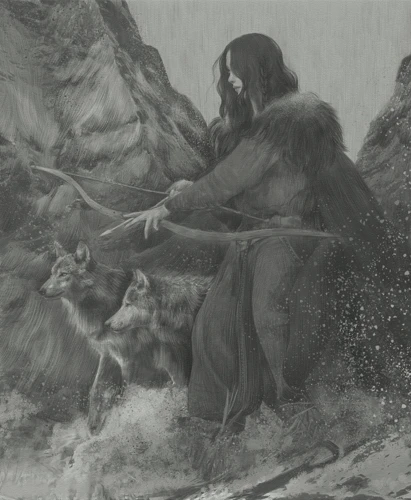
The origins of Celtic mythology can be traced back to that shaped the beliefs and practices of the ancient Celts. One significant influence was the presence of Indigenous Pre-Celtic Cultures. These cultures had their own established mythologies and spiritual traditions, which were gradually absorbed and assimilated by the incoming Celtic tribes. The interactions and coexistence between the Celts and these indigenous cultures resulted in a fusion of beliefs and the emergence of a unique Celtic mythology. Another major influence on Celtic mythology was the Indo-European Connection. The Celts, being part of the larger Indo-European language family, shared common linguistic and cultural roots with other ancient civilizations such as the Greeks, Romans, and Indians. This connection led to the exchange and assimilation of mythological ideas and motifs. The spread of Indo-European languages and the migration of peoples played a significant role in the transmission of these mythological influences across different regions. The Pre-Celtic mythological influences played a crucial role in shaping the unique and complex belief system of the Celts, setting the foundation for the fascinating world of Celtic mythology that would unfold in the centuries to come.
Indigenous Pre-Celtic Cultures
Indigenous pre-Celtic cultures played a significant role in shaping the foundations of Celtic mythology. These ancient cultures inhabited the regions that would later become Celtic territories, influencing the beliefs and practices of the Celtic people. One such culture is the megalithic builders of western Europe and Ireland. These Neolithic communities constructed massive stone monuments, such as Stonehenge and Newgrange, with precise astronomical alignments. These structures served as ceremonial and burial sites, showcasing a reverence for the celestial realm and the cycle of life and death. The pre-Celtic inhabitants of Ireland, known as the Proto-Celts, also left their mark on Celtic mythology with their unique burial practices, which included placing offerings and personal belongings within tombs. These customs reflect a belief in an afterlife and the continued connection between the living and the deceased. Additionally, the influence of the Druids, a learned class of religious leaders and intellectuals, can be traced back to the indigenous pre-Celtic cultures. The Druids held immense knowledge and played a pivotal role in shaping Celtic mythology and rituals. Through their deep understanding of nature and the spiritual world, the Druids continued the traditions and beliefs of their ancestors, intertwining them with the emerging Celtic culture. The indigenous pre-Celtic cultures provide a vital link in understanding the origins of Celtic mythology, highlighting the deep connection between the land, the celestial realms, and the spiritual beliefs of the ancient Celts.
The Indo-European Connection
The Indo-European connection is a crucial aspect to understanding the origins of Celtic mythology. The Celts were part of the larger Indo-European family, a linguistic and cultural group that spans across Europe and Asia. Indigenous Pre-Celtic Cultures in Europe likely had their own mythologies and spiritual practices prior to the arrival of the Celts. However, the Celtic migration and subsequent interactions with these indigenous peoples led to the integration and blending of mythological beliefs. One theory suggests that the early Celts, through their travels and conquests, assimilated and adapted indigenous deities and mythological motifs into their own pantheon. can be seen in the similarities between Celtic deities and those of other Indo-European cultures. For example, the Celtic god Lugh bears similarities to the Norse god Odin and the Greek god Apollo, all of whom are associated with light, wisdom, and skill. This connection implies a shared ancestral mythology among these diverse cultures. The Indo-European connection serves as a reminder of the interconnectedness of ancient civilizations and the common threads that run through their mythologies. By exploring these connections, we gain a deeper understanding of the rich tapestry of Celtic mythology and its place within the broader context of Indo-European belief systems.
The Celtic Pantheon
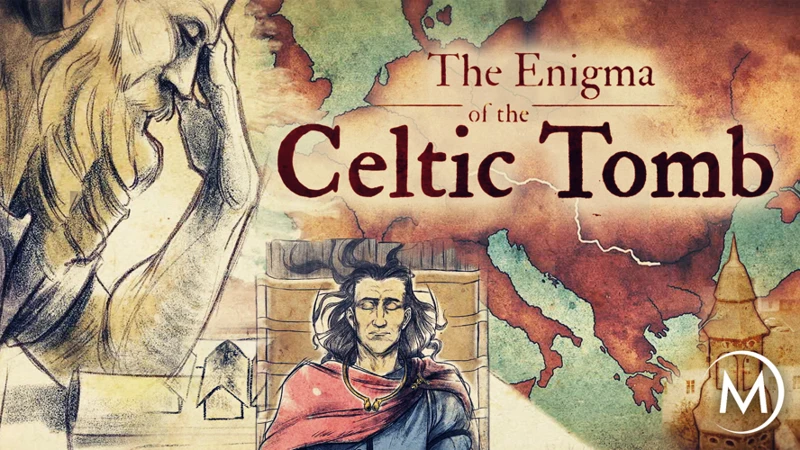
The Celtic Pantheon was a complex and diverse collection of gods and goddesses that played significant roles in Celtic mythology. The Gods and Goddesses of the Celts were often associated with natural elements and forces, reflecting the deep connection the Celts felt with the world around them. Some of the prominent deities included:
- Dagda: Known as the “Good God,” Dagda was a powerful figure associated with abundance, fertility, and wisdom. He was often depicted as a bearded man carrying a magical cauldron.
- Morrigan: The Morrigan was a goddess of war, fate, and prophecy. She had the ability to shape-shift into various forms, often taking the appearance of a crow or raven.
- Lugh: Lugh was a multi-talented god associated with skills and craftsmanship. He was revered as the god of light, arts, and justice, and was often depicted as a warrior carrying a spear.
- Brigid: Brigid was a goddess of poetry, healing, and smithcraft. She was highly revered and worshipped as one of the most powerful Celtic deities.
- Cernunnos: Cernunnos was a horned god associated with fertility, animals, and the wilderness. He was often depicted with antlers and was considered a protector of nature.
Divine Cycles and Mythical Beings played an important role in Celtic mythology. The concept of cyclical time permeated their belief system, with various festivals and rituals celebrating the changing seasons and cycles of life and death. The Celts believed in the existence of mythical beings such as fairies, spirits, and shape-shifters. These otherworldly creatures were said to inhabit sacred sites and were often encountered by humans in tales and legends.
Mythical Tales and Legends were woven into the fabric of Celtic society, passed down through generations. These stories often revolved around heroic warriors, epic battles, and quests for treasures or love. The most famous of these tales is the legendary saga of King Arthur and the Knights of the Round Table, which has roots in Celtic mythology.
The Celtic Pantheon was a testament to the depth and complexity of Celtic beliefs, honing a diverse and intricate collection of gods, goddesses, and mythical beings that shaped the worldview and cultural practices of the Celts. Understanding the pantheon is crucial to gaining insight into the rich mythology that continues to captivate enthusiasts and scholars to this day.
The Gods and Goddesses of the Celts
The Gods and Goddesses of the Celts played a central role in their mythology and religious practices. They were worshipped and revered for their powers and influence over various aspects of life. The Celtic pantheon was diverse and encompassed a wide range of deities, each associated with specific domains and attributes. Some of the prominent gods and goddesses include:
– Danu: Considered the mother goddess and associated with fertility, abundance, and the land.
– Dagda: The great god and ruler of the pantheon, associated with wisdom, magic, and abundance.
– Morrigan: A powerful goddess associated with war, fate, and prophecy.
– Brigid: The triple goddess associated with healing, poetry, and craftsmanship.
– Lugh: A heroic god associated with arts, skills, and the harvest.
– Cernunnos: The horned god associated with nature, fertility, and the wild.
These gods and goddesses were not just distant figures but were believed to actively participate in the lives of mortals, intervening in battles, influencing the outcomes of harvests, and granting blessings or curses. They were worshipped through rituals, offerings, and sacrifices, often performed by druids, who acted as intermediaries between the mortal and divine realms. The stories and myths surrounding these deities provided guidance, moral lessons, and a sense of collective identity to the Celtic people. The worship of these gods and goddesses was deeply ingrained in Celtic society and played a vital role in shaping their culture and worldview.
Divine Cycles and Mythical Beings
The Role of Rituals and Festivals

The Role of Rituals and Festivals played an essential part in Celtic society, serving as occasions to honor deities, celebrate seasonal changes, and strengthen communal bonds. Rituals were conducted by druids, who played a crucial role as priests and spiritual leaders. They performed ceremonies invoking the blessings of gods and goddesses and maintained harmony between the mortal and divine realms. These rituals often took place at sacred sites such as stone circles or hilltops, where the Celts believed the spiritual energies were concentrated. Offerings, including food, drink, and symbolic objects, were made to appease the gods and seek their favor. Festivals held great importance in the Celtic calendar, marking significant moments in agricultural cycles and celestial events. One such festival was Samhain, observed on October 31st, symbolizing the end of summer and the beginning of winter. It was a time when the veil between the living and spiritual realms was thinnest, and the Celts believed that spirits could freely roam the earth. Another notable festival was Beltane, celebrated on May 1st, honoring the arrival of summer and fertility. Bonfires were lit, and livestock were driven through the flames to purify and protect them. These rituals and festivals were integral to the Celtic way of life, connecting them with the divine forces, reinforcing social cohesion, and ensuring the prosperity of their communities. The ancient Celts truly understood the power of ceremony and celebration in maintaining spiritual harmony and cultural identity.
Interactions with Other Mythologies
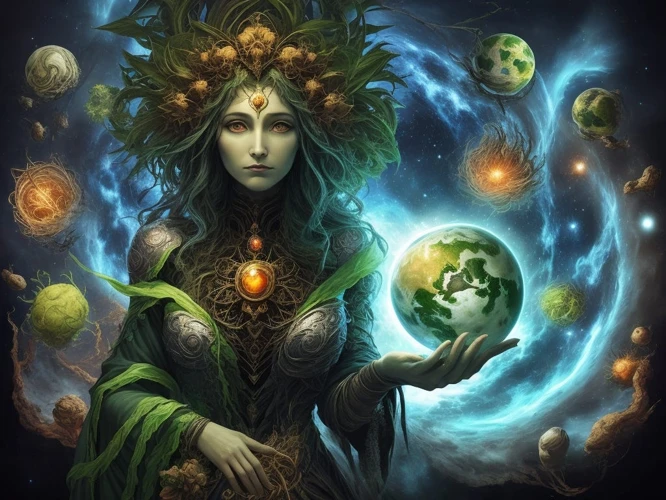
Interactions with Other Mythologies
The world of Celtic mythology did not exist in isolation, but instead had fascinating interactions with other mythologies from different cultures. One notable example is the connection between Celtic and Norse mythology. Both cultures shared similarities in their pantheons, with gods like Odin and Thor having counterparts in Celtic mythology. These connections likely arose from cultural exchanges, trade, and migration between the Celtic and Norse peoples. Another significant interaction was between Celtic and Greek mythology. While they had distinct pantheons, there were similarities in the themes of heroism, quests, and the presence of powerful deities. Notable examples include the Greek hero Hercules being equated with the Celtic hero Cú Chulainn, and the goddess Athena having similarities to the Celtic goddess Morrigan. These interactions allowed for the exchange of ideas, stories, and cultural influences, enriching both mythologies. As the world becomes more interconnected, it is fascinating to explore the parallels and connections between different mythological traditions, as they offer us a deeper understanding of human culture and the universal themes that resonate across time and civilizations.
Celtic and Norse Mythology
Celtic and Norse mythology share fascinating similarities and connections that highlight the cultural exchanges between the Celtic and Norse peoples. Both mythologies are rooted in the ancient Indo-European traditions, with certain archetypes and themes appearing in both. One of the most evident connections is the parallel between the Celtic god Lugh and the Norse god Odin. Lugh, known as the god of light and wisdom, shares characteristics with Odin, such as being associated with sovereignty, magic, and the arts. Another noteworthy similarity is the concept of the Otherworld, which exists in both Celtic and Norse mythology as a realm of gods, spirits, and mythical creatures. In Celtic mythology, this is often referred to as the realm of the Sidhe or Fairy Folk, while in Norse mythology, it is known as the land of the Æsir and Vanir. The idea of heroic sagas and divine quests is also present in both mythologies, with tales of brave warriors, epic battles, and the pursuit of immortality. These connections between Celtic and Norse mythology provide a glimpse into the cultural exchanges and influences that occurred between these ancient peoples, shaping their belief systems and enriching their mythological traditions.
Celtic and Greek Mythology
Celtic and Greek mythology have intriguing parallels and divergences, showcasing the unique aspects of each culture’s belief system. While both mythologies encompass a vast array of gods, goddesses, heroes, and mythical creatures, their characteristics and narratives differ significantly. Celtic mythology centers around the spiritual connections between humans and their natural environment, emphasizing the importance of ancestral lineage and the cycles of life and death. On the other hand, Greek mythology focuses on the struggles and triumphs of divine beings and the exploration of human virtues and flaws. Despite these differences, there are intriguing intersections between the two mythologies. For example, both Celtic and Greek mythologies feature a deity associated with the sea – in Celtic mythology, there is Manannán mac Lir, the god of the sea and the Otherworld, while Greek mythology includes Poseidon, the god of the sea and earthquakes. Additionally, both mythologies contain tales of heroic figures and mythical creatures. While the stories may vary, the underlying themes of heroism, adventure, and the exploration of the human condition unite the mythologies of both cultures. These connections highlight the universality of myth and the ways in which different cultures explore similar themes through their unique narratives.
Survival and Revival

Survival and Revival
Celtic mythology, despite the periods of upheaval and influence from neighboring cultures, managed to survive through the centuries. Celtic Mythology in Literature and Art played a significant role in its preservation. Celtic tales and legends were passed down orally for generations but were eventually transcribed by medieval monks. These written records, such as the Irish myths and sagas found in texts like the Book of Invasions and the Táin Bó Cúailnge, ensured that the stories would endure. Additionally, Celtic symbols, such as the Triskele and the Celtic Knot, were incorporated into various forms of art, including metalwork, illuminated manuscripts, and stone carvings. They served as visual reminders of the ancient Celtic culture and its mythology.
In recent times, there has been a The Modern Celtic Mythological Revival. The 19th and 20th centuries witnessed a renewed interest and appreciation for Celtic mythology. Scholars and writers such as Lady Augusta Gregory, W.B. Yeats, and J.R.R. Tolkien drew inspiration from Celtic myths and incorporated them into their literary works. This revival extended beyond literature, as artists, musicians, and even modern-day Druids sought to reconnect with the ancient Celtic traditions. Today, festivals and gatherings celebrating Celtic culture and mythology are held around the world, drawing people who find solace and inspiration in the ancient tales and wisdom of the Celts. The survival and revival of Celtic mythology serve as a testament to the enduring power and allure of this ancient belief system.
Celtic Mythology in Literature and Art
Celtic mythology has left a profound impact on literature and art throughout history. has served as a source of inspiration for countless writers, poets, and artists, both ancient and modern. In early Celtic societies, myths and legends were often preserved and transmitted through oral tradition by bards and storytellers. However, with the advent of writing, these tales began to be recorded in written form, leading to the preservation of ancient Celtic literature. One of the most famous examples is the /role-zodiac-signs-astrology/, which documents the mythology and history of the Celtic people. The epic tells the story of the hero Cú Chulainn and his adventures, showcasing themes of heroism, honor, and the interplay between humans and divine forces. Celtic mythology also found its way into medieval literature, such as the Arthurian legends, where characters like King Arthur and the Lady of the Lake are associated with Celtic mythology. In addition to literature, Celtic mythology has been a significant influence on art. Intricate designs and symbols from Celtic mythology can be found in ancient Celtic artifacts, such as the famous Book of Kells. These designs often depict mythological figures, animals, and intricate knotwork. In modern times, Celtic mythology continues to inspire writers, artists, and filmmakers who draw upon its rich imagery and themes to create captivating works of art. The enduring influence of Celtic mythology in literature and art is a testament to its timelessness and enduring appeal.
The Modern Celtic Mythological Revival
The modern Celtic mythological revival refers to a reawakening of interest in Celtic mythology, folklore, and traditions that began in the 18th and 19th centuries and continues to thrive today. This revival was sparked by a growing fascination with the ancient cultures of Celtic-speaking peoples and a desire to reconnect with a sense of Celtic identity. Celtic Mythology in Literature and Art played a significant role in this revival, as writers and artists sought to incorporate Celtic themes into their works. Writers like William Butler Yeats and Lady Gregory drew inspiration from Celtic mythology, infusing their poetry and plays with Celtic motifs and ancient tales. In art, the Celtic Revival movement embraced symbols, patterns, and designs derived from ancient Celtic art, bringing new life to traditional artistic forms. also extended beyond literature and art, influencing cultural and spiritual movements. Celtic paganism and neo-Druidism emerged as modern religious practices inspired by ancient Celtic beliefs, fostering a sense of spirituality rooted in nature and reverence for Celtic deities. Festivals and gatherings celebrating Celtic culture, such as the Celtic Colours International Festival in Cape Breton, Nova Scotia, and the Pan Celtic Festival in Ireland, further contribute to the continued revival of Celtic mythology. Today, the modern Celtic mythological revival serves as a testament to the enduring power and relevance of Celtic mythology and its ability to captivate and inspire people from all walks of life.
Conclusion
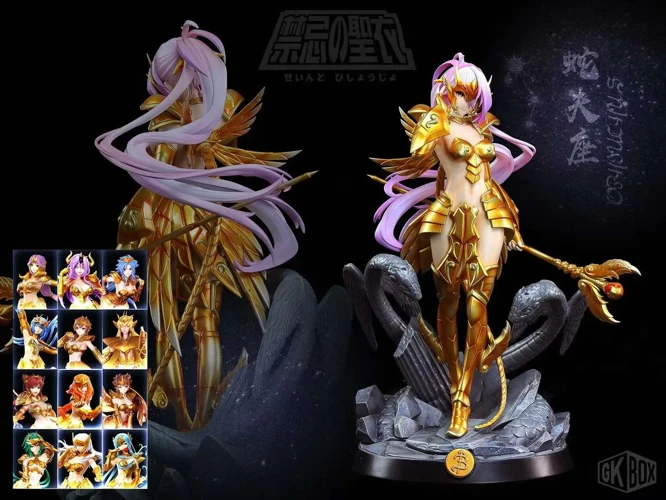
In conclusion, the journey through the origins of Celtic mythology reveals a captivating world filled with gods, goddesses, heroes, and mythical creatures. The Ancient Celts, with their vibrant culture and deep connection to nature, laid the foundation for the intricate belief systems that shaped their mythology. From the Celtic pantheon with its diverse gods and goddesses to the cycles of divine beings and the rich tapestry of mythical tales and legends, Celtic mythology paints a picture of a society deeply intertwined with the supernatural. The importance of rituals and festivals in Celtic society demonstrated their spiritual devotion and strengthened social bonds. The interactions between Celtic mythology and other mythologies, such as Norse and Greek, showcased the interconnectedness of ancient cultures. Celtic mythology’s survival and revival, seen through literature, art, and the modern Celtic mythological revival, highlight its timeless appeal and enduring influence on contemporary society. As we conclude this journey through time, we gain a profound appreciation for the depths of Celtic mythology and its enduring legacy throughout the ages.
Frequently Asked Questions

FAQs about The Origins of Celtic Mythology
1. What is Celtic mythology?
Celtic mythology refers to the collection of myths, legends, and folklore that originated from the ancient Celts, a group of people who inhabited parts of Europe during the Iron Age.
2. When did the ancient Celts exist?
The ancient Celts existed between the 8th and 1st centuries BCE, primarily in regions such as Ireland, Scotland, Wales, Gaul (France), and the Iberian Peninsula.
3. What were some key aspects of Celtic culture?
Celtic culture was characterized by its vibrant art, intricate craftsmanship, strong tribal structures, oral tradition, and profound connection to nature.
4. Who were the druids in Celtic society?
The druids were highly respected members of Celtic society who served as priests, advisors, and custodians of knowledge. They played crucial roles in religious ceremonies and acted as mediators between gods and humans.
5. How did the ancient Celts view the natural world?
The ancient Celts had a deep reverence for nature and believed that the natural world was inhabited by spirits and deities. They saw sacredness in trees, rivers, hills, and other natural features.
6. What were some common rituals and festivals in Celtic mythology?
Celtic mythology was intertwined with rituals and festivals that celebrated the changing seasons, honored deities, and strengthened community bonds. Examples include Beltane, Samhain, and Imbolc.
7. Were there female figures of importance in Celtic mythology?
Yes, Celtic mythology featured powerful goddesses such as Brigid, Morrigan, and Rhiannon. These goddesses represented various aspects of femininity, including wisdom, war, and fertility.
8. Did the ancient Celts have a written language?
The ancient Celts did not have a system of writing until they adopted the Roman alphabet. As a result, much of their mythology and history were passed down orally through generations.
9. How did Celtic mythology influence modern culture?
Celtic mythology has had a lasting impact on art, literature, and even modern-day paganism. Elements of Celtic mythology can be seen in popular culture, particularly through works inspired by Celtic folklore.
10. Are there any surviving ancient Celtic texts?
While there are no complete surviving ancient Celtic texts, there are fragments and inscriptions that provide glimpses into Celtic religious beliefs, practices, and mythological tales.
References
Frequently Asked Questions

1. How old is Celtic mythology?
Celtic mythology is believed to have originated around 2000 BCE, making it over 4000 years old.
2. What regions did the ancient Celts inhabit?
The ancient Celts were spread across much of Western Europe, with their core regions being present-day Ireland, Scotland, Wales, and parts of France and Spain.
3. Did the Celts have a written language?
Yes, the Celts had a written language known as Celtic script or Ogham. It was primarily used for inscriptions on stone monuments and is one of the earliest known written forms in Europe.
4. Who were the deities worshipped in Celtic mythology?
The Celts worshipped a wide range of gods and goddesses, including deities associated with nature, war, fertility, and craftsmanship. Some prominent deities include Dagda, Morrigan, Lugh, Brigid, and Cernunnos.
5. What were some common mythical creatures in Celtic mythology?
Celtic mythology is rich in mythical creatures. Some common ones include the fairy-like Sidhe, the shape-shifting Selkies, the water-dwelling Kelpies, and the mysterious Banshees.
6. How did Celtic mythology influence other mythologies?
Celtic mythology had interactions with other mythologies, particularly Norse and Greek mythology. These exchanges often led to the blending of mythological elements and the emergence of new tales.
7. What role did rituals and festivals play in Celtic mythology?
Rituals and festivals were integral to Celtic mythology. They were performed to honor the gods, celebrate seasonal changes, and mark important life events. These rituals often involved offerings, bonfires, music, and dance.
8. What is the significance of Celtic mythology in modern literature and art?
Celtic mythology continues to inspire writers, artists, and filmmakers in modern times. Its themes of heroism, magic, and the connection to nature have made it a timeless source of inspiration.
9. Are there any surviving written texts of Celtic mythology?
Unfortunately, no complete written texts of Celtic mythology have survived. Most of the knowledge we have about Celtic mythology comes from ancient texts written by Greek and Roman historians.
10. How has Celtic mythology been revived in modern times?
Celtic mythology has experienced a revival in modern times through the efforts of Celtic scholars, writers, and enthusiasts. This revival has led to the rediscovery and reinterpretation of Celtic myths and legends.
References
- The Celtic Myths That Shape the Way We Think
- What is the Real Celtic Creation Myth?
- Celtic Mythology & History: Explore Timeless Tales …







